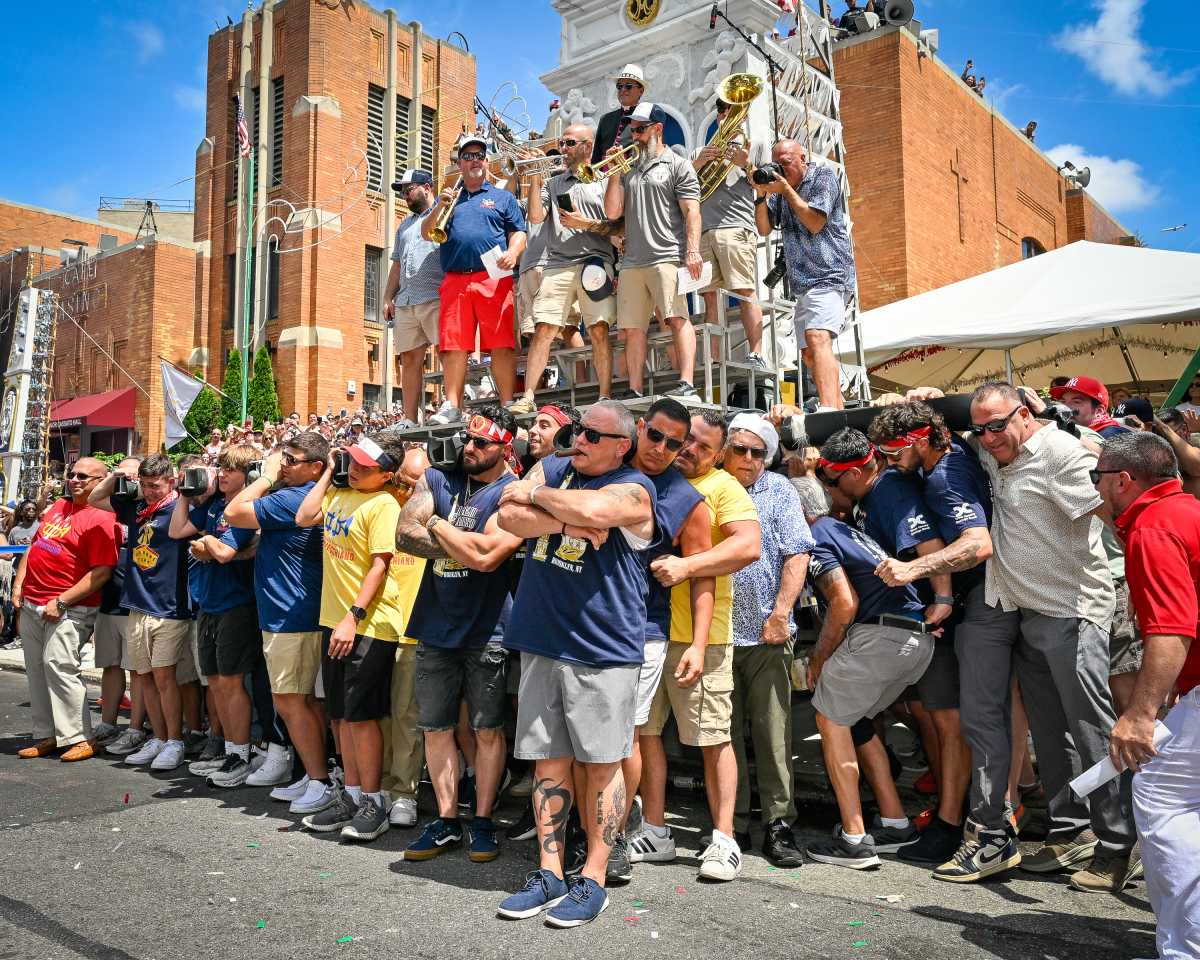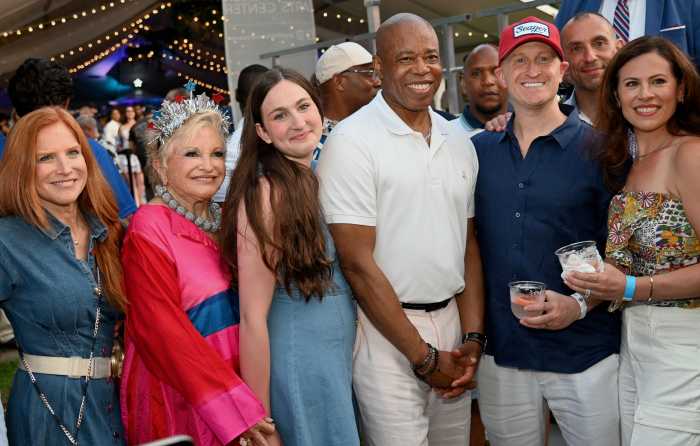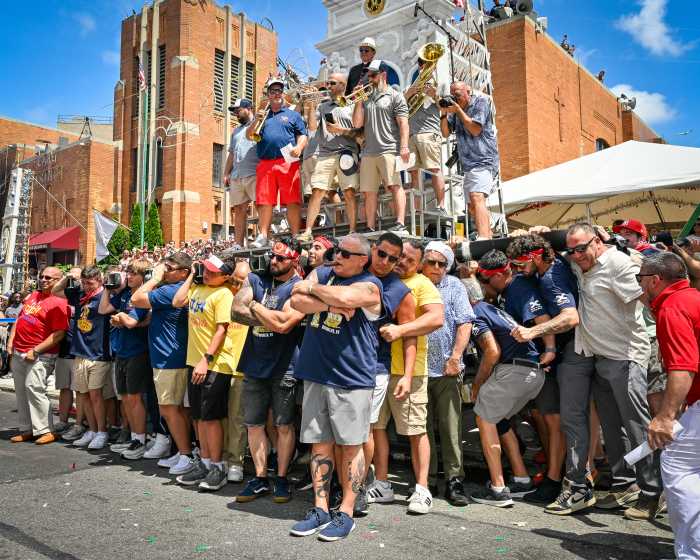
BY DENNIS LYNCH | Mulry Square’s famous community-born 9/11 tribute, Tiles For America, is slowly returning to its home on a new chain-link fence at the corner of Seventh Ave. South and Greenwich Ave. after a four-year absence, thanks to locals intent on rebuilding what some in the neighborhood called the “Heart and Soul of the Village.”
“Oh, my gosh, everyone is so happy to see them back,” said Dusty Berke, who has led a group of some 70 volunteer memorial caretakers. “There’s been so many incredible people stepping up to offer their time and talent, I’m excited to be a part of the project.”
The rebuild follows years of conflict between parties who disagreed over what to do with the roughly 6,000 hand-painted ceramic tiles that locals and folks from around the world hung on the chain-link fence following the tragedy. Nearly a decade ago, the Metropolitan Transportation Authority, which owns the property, announced it was tearing down the fence to build a tunnel ventilation building at 61 Greenwich Ave., putting the fate of the tribute in limbo.
The state planned to store the tiles in Albany and hang them on a new fence there post-construction. But a group of self-appointed tile guardians — out of a lack of trust for state caretakers — took down most of the clay squares and stored them themselves just before the teardown started in 2012.
Not everyone was happy with Berke’s actions, though. Following the tile takeaway, some accused her and her group of “going rogue” and questioned their capacity to care for the squares, many of which were over a decade old, weathered and fragile.

Berke said some tiles were damaged, but that it was due to weather damage, not how she handled them.
And the more fragile ones will go to an indoor memorial “museum” she hopes to open somewhere in the neighborhood.
Since the M.T.A. finished building the ventilation structure earlier this year, Berke and others have hung roughly 250 of the 3,000 tiles they removed four years ago. Berke said she has a “certificate of ownership” for the tiles that were in her possession.
They reinstalled many there on the most recent anniversary of the 9/11 terror attacks. And slowly others who took down their own tiles have come to hang them again, along with plants and flowers, too, Berke said.
“You find little things appearing there, like a new plant here or a letter — people adding a little touch,” Berke said. “There’s a million different stories in the tiles, and we’re doing something amazing on the corner, and it’s all community-based.”
Locals hope the returning tiles at least will make the M.T.A.’s hugely unpopular bare-concrete-and-faux-brick-facade structure easier on the eyes. Residents and community leaders panned the design for a lack of character and mockingly dubbed it a “fauxcade.”
The owner of a longstanding business across Greenwich Ave. said the returning tiles have made the building outside his storefront window easier on the eyes, but that it still could use a bit more TLC.
“The tiles do make it more cheerful, it’s a vast improvement. I’d like to see more,” said Peter Koefoed, owner of Tabwa. “It’d be nice if they extended the brick, maybe put some curtains, some pots and plants. The consensus in the neighborhood is that it’s really, really awful.”
Others are not so optimistic. A nearby neighbor and longtime critic of the building said the restored memorial could not make up for the ugly concrete behemoth.
“This is putting lipstick on a pig — albeit, it’s a very charming and patriotic lipstick — but the half-witted, half-completed demi-fauxcade…still looks like a pile of naked concrete dumped into your neighborhood from a concrete factory in an industrial zone,” Jessica Seigel, of Morton St., said.
Affixed to an ugly building or not, the reborn Tiles For America memorial is once again attracting tourists to the area as its predecessor did. It’s made it back onto some online tour guides, including the one that two Dutch travelers were following on Tues., Sept 27. They admitted the structure housing the M.T.A. fan plant was “ugly,” but that the tiles memorial was the focus anyway.
“It’s small, it’s got something communal about it, I like it,” Martin Bogodel said. “This was sort of out of the way but we took the detour to see it.”




































